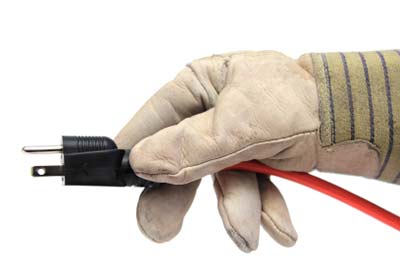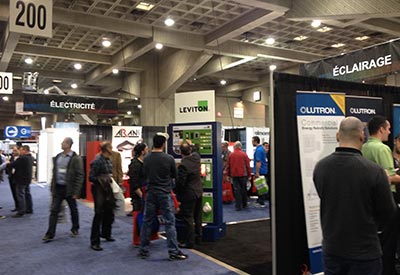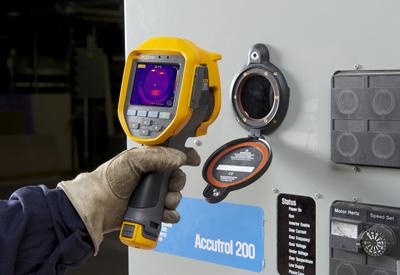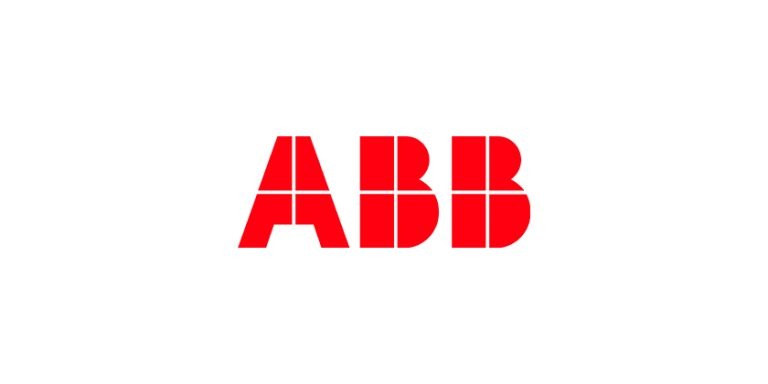Maintenant disponible: La norme ULC sur la sécurité en matière d’électricité sur les lieux de travail des services publics d’électricité

Pierre McDonald
En décembre 2014 la deuxième édition de la norme CAN/ULC-S801 sur la sécurité en matière d’électricité sur les lieux de travail des services publics d’électricité a été adoptée. Cette norme s’applique à la construction, à l’exploitation, à la maintenance et au remplacement des réseaux des services publics d’électricité utilisés pour produire, transformer, transporter, distribuer ou fournir de la puissance ou de l’énergie électrique aux branchements du consommateur ou à l’équivalent. L’objet de la présente Norme est de fournir des exigences relatives à la sécurité pour les services publics d’électricité, les travailleurs et les employeurs travaillant sur ou près des réseaux de production, de transport et de distribution d’électricité. Cette édition comprend de nouvelles sections et mises à jour sur l’évaluation des risques et le danger d’arc électrique, des données sur la liaison et la mise à la terre équipotentielles et plus.
Lire l’article …
A worker safety program means that at the end of the day, everyone gets to go home. For any industry, precautions must be maintained to ensure worker safety. In the electrical utility industry these precautions start with a very detailed set of “safety Rules” with every worker following the procedures outlined in those rules. Power line technicians do not always get the luxury of de-energizing circuits before they work on them. It is for this reason they must follow strict “hot line” work procedures and adhere to very specific limits of approach distances.
Occupational health and safety legislation in every province and territory ensures these worker safety programs are up to date. For this legislation, a revised standard has become available to help those jurisdictions ensure that the lights can stay on without the heavy cost of worker injuries or worse.
Electric utility workplace
ULC Standards issued a standard bulletin in December 2014 to announce the publication of the second edition of CAN/ULC-S801, Standard on Electric Utility Workplace Electrical Safety for Generation, Transmission, and Distribution. The development of this second edition was funded by the Canadian Electricity Association (CEA) This CAN/ULC-S801 standard is recognized as a national standard of Canada, has been approved by the ULC Standards Committee on Electric Utility Workplace Electrical Safety. Presently, Alberta Workplace Health and Safety is in the middle of a public consultation on their new Occupational Health and Safety Code whereby they are proposing to reference the CAN/ULC-S801 Standard. To participate in this consultation, go to http://alberta.ca/publicconsultations.cfm.
CAN/ULC-S801 applies to the construction, operation, maintenance and replacement of electric utility systems that are used to generate, transform, transmit, distribute or deliver electrical power or energy to consumer services or their equivalent.
This includes:
• equipment located in easements, rights of way, or in other recognized agreements
• equipment located on property owned or leased by the electric utility for the purpose of communication, metering and control of electrical power or energy
• service drops or laterals, associated metering, and street lighting under the exclusive control of electric utilities
• facilities used to generate electrical power or energy for electric utility systems
• voltage levels up to 800 kV AC line-to-line (L-L) and 600 kV DC
The purpose of this standard is to provide safety performance requirements for electric utilities, workers and employers involved in work on or near electric generation, transmission and distribution systems.
This second edition CAN/ULC-S801 includes:
• new and updated sections on risk assessment and electric arc hazard
• informative material on equipotential bonding and grounding, fall protection and use of PPE
• modified content that better aligns with the IEC Canadian adaptations Live Working standards
Electric arc flash hazard
Electric arc hazard is defined within the standard as follows:
“a potential harm from an energy release from an electrical arc usually caused by a short circuit or equipment failure in electrotechnical work.”
Note 1, The possibility of an arc flash (electric arc) hazard exists when live electrical conductors or parts are exposed and when they are inside of equipment even when guarded or enclosed, if a worker is interacting with the equipment in a way which could cause an electric arc. Under normal operating conditions, enclosed energized equipment that has been properly designed, installed and maintained is not likely to pose an electric arc hazard.
Note 2, The hazards may include thermal effects, noise, pressure wave effects, ejected parts effects, molten metal, optical and other effects. Different PPE may be required to protect from different effects. The risk assessment must consider all the potential effects.
The standard requires that when personnel work in proximity to energized equipment above 50 V AC, all potential sources of arc flash should be identified and risk assessed. Parameters to consider when performing an arc-flash assessment should include but be not limited to fault current, fault clearing time, arc length, distance to the arc and system voltage. Consideration shall also be given to very low fault energy areas as well as very high. Low fault currents can result in very long clearing times and may give higher total incident energies than high fault currents with very fast clearing times.
Additionally the standard outlines alternative or additional measures to minimize worker exposure where incident energy cannot be reduced to a point below the “lowest practicable level” — assumed to fall below 167.5 kJ/m2 (40 cal/cm2) at the normal (or working) distance from specific apparatus — where commonly available arc-rated PPE can be used to protect workers.
Equipotential bonding and grounding
While grounding in the power line context is the physical connections of isolated lines and equipment to ground, equipotential grounding physically interconnects conductive parts (lines and equipment) to maintain a common potential in order to limit the current that can pass through the body of a utility worker to a level that will not cause harm. This is the practice of keeping the worker’s extremities (hands and feet) at the same voltage or as close as possible to eliminate the flow of current through the body.
The CAN/ULC-S801 standard provides several examples of equipotential grounding calculations whereby the current through the electrical workers body is kept well below the value at which ventricular fibrillation would occur. Keep in mind there will always be some current flow through the worker, in inverse proportion to the resistance of the body path as compared to the parallel equipotential bond path. The intent is to keep the current sufficiently low that there are no harmful effects to the worker.
Live working standards
Live working standards, procedures and equipment is extremely specialized and procedurally driven. Section 7 of the CAN/ULC-S801 standard provides direction and references for live work on low, medium and high voltages systems, including insulating gloves (rubber gloves), insulating sticks and bare handed work. Additional standards and references include:
• CAN/ULC-60855-09, Live Working – Insulating Foam-Filled Tubes and Solid Rods for Live Working (IEC 60855:1985, MOD)
• CAN/ULC-60895-09, Live Working – Conductive Clothing for Use at a Nominal Voltage up to 800 kV a.c. and ± 600 kV d.c. (IEC 60895:2002, MOD)
• CAN/ULC-60903-09, Live Working – Gloves of Insulating Material (IEC 60903:2002, MOD)
• CAN/ULC-60984-08, Sleeves of Insulating Material for Live Working (IEC 60984:2002, MOD)
• CAN/ULC-61112-09, Blankets of Insulating Material for Electrical Purposes (IEC 61112:1992, MOD)
• CAN/ULC-61229-09, Rigid Protective Covers for Live Working on a.c. Installations (IEC 61229:2002, MOD)
• CAN/ULC-61230-09, Live Working – Portable Equipment for Grounding and Bonding (IEC 61230:2008, IDT)
• CAN/ULC-61235-09, Live Working – Insulating Hollow Tubes for Electrical Purposes (IEC 61235:1993, IDT)
• CAN/ULC-61243-2-09, Live Working – Voltage Detectors – Part 2: Resistive Type to be Used for Voltages of 1 kV to 36 kV a.c. (IEC 61243-2:2002, MOD)
• CAN/ULC-61318-08, Live Working – Conformity Assessment Applicable to Tools, Equipment and Devices (IEC 61318:2007, IDT)
• CAN/ULC-61328-09, Live Working – Guidelines for the Installation of Transmission Line Conductors and Earthwires – Stringing Equipment and Accessory Items (IEC TR 61328:2003, MOD)
• CAN/ULC-61478-05, Live Working – Ladders of Insulating Material (IEC 61478:2003, IDT)
• CAN/ULC-61479-05, Live Working – Flexible Conductor Covers (Line Hoses) of Insulating Material (IEC
• CAN/ULC-D61481-06, Live Working – Portable Phase Comparators for Use on Voltages from 1 kV to 36 kV a.c. (IEC 61481-A2:2004, MOD) CAN/ULC-61482-1-1-09, Live Working – Protective Clothing Against the Thermal Hazards of an Electric Arc – Part1-1: Test Methods – Method 1: Determination of the arc rating (ATPV or EBT50 of flame resistant materials for clothing (IEC 61482-1-1:2009, IDT)
• CAN/ULC-61482-2-09, Live Working – Protective Clothing Against the Thermal Hazards of an Electric Arc – Part 2: Requirements (IEC 61482-2:2009, MOD)
• CAN/ULC-61911-05, Live Working – Guidelines for the Installation of Distribution Line Conductors – Stringing Equipment and Accessory Items (IEC TR 61911:2003, IDT)
• CAN/ULC-62192-09, Live Working – Insulating Ropes (IEC 62192:2009, MOD)
• CAN/ULC-62193-09, Live Working – Telescopic Sticks and Telescopic Measuring Sticks (IEC 62193:2003, MOD)
• CAN/ULC-62237-09, Live Working – Insulating Hoses with Fittings for Use with Hydraulic Tools and Equipment
With so much at stake when maintaining electrical systems that the general population take for granted will always be up and running, the power line industry now has a revised standard to help ensure proper work habits, procedures and safety equipment will get workers home after a day’s work. In addition to the brief descriptions above, the CAN/ULC-S801 standard includes information on fall protection and use of PPE, worker and employer responsibilities, minimum approach distances and requirements for vegetation control work in the vicinity of overhead lines.
The Committee on Electric Utility Workplace Electrical Safety: ULC-S800A mandate is to develop and maintain standard(s) pertaining to electric utility workplace electrical safety for generation, transmission, and distribution. If you require any additional information, please contact Gillian Ottley at 613-755-2729 ext. 61472 or by email at Gillian.Ottley@ul.com.
This standard can be ordered for $220 (Hardcopy) or $182 (PDF) at www.ulc.ca by selecting ULC Standards. Once on the ULC Standards homepage, select Sales of ULC Standards Materials
If you require any additional information regarding ULC Regulatory Affairs, please contact Pierre McDonald at 780-419-3202 or by email at Pierre.mcdonald@ul.com.
Read More from Pierre McDonald:
– Le Code et la sécurité publique par les normes sur les produits électriques
– Législation provinciale et exigences administratives du Code électrique
– Section 62 : Appareillage fixe de chauffage électrique
– Maintenant disponible: La norme ULC sur la sécurité en matière d’électricité sur les lieux de travail des services publics d’électricité: Parte 2
– UL Code Link
– Système de notification de masse et accessoires
– Établir le moment où les nouveaux documents du Code s’appliquent
– Des changements aux sections 20, 32 et 46 du Code national de l’électricité qui sera adopté sous peu
– Classification des emplacements dangereux, ainsi que des gaz et vapeurs inflammables
Pierre McDonald, CET, is Senior Regulatory Affairs Representative/Répresentant Principal, Affaires Réglementaires, Underwriters Laboratories of Canada Inc. Based in St. Albert, AB, Pierre has been a member of the Canadian Electrical Code Part 1 technical committee as well as several subcommittees including serving as Chair of Sections 6 and 76 and as a member representing regulators on several other CSA committees. Pierre is still active with code development and interpretation.












